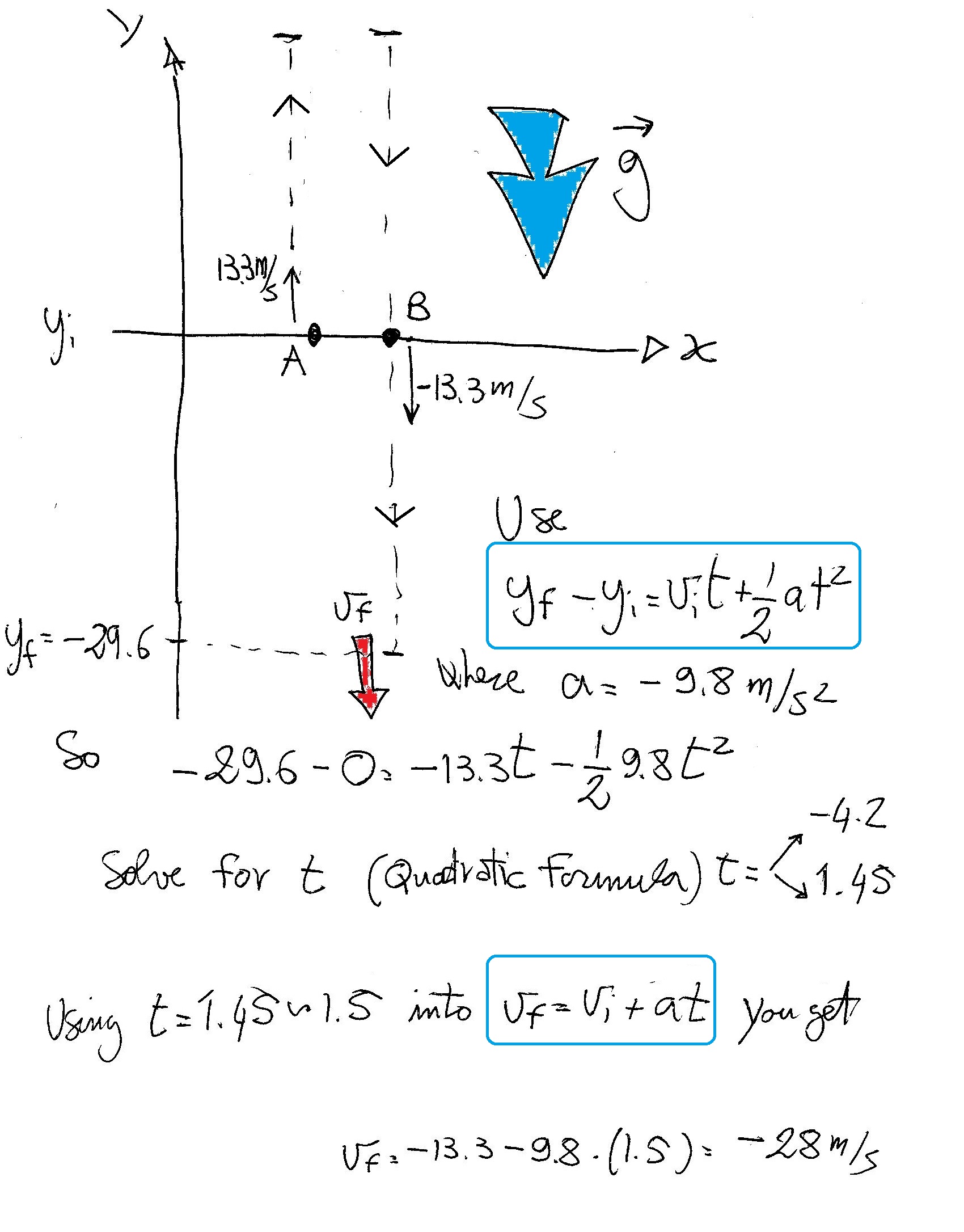Question #b43b8
2 Answers
I found
Explanation:
When the object comes back (passing through the releasing point again) it'll have a velocity of
So we have:

Explanation:
So, you know that an object is being thrown straight upwards from an unknown height
At meximum height, the velocity of the object will be equal to zero, which means that you can say
#underbrace(v_"top"^2)_(color(blue)(=0)) = v_0^2 - 2 * g * h_1#
The distance the object travels before reaching maximum height will thus be
#h_1 = v_0^2/(2 * g) = (13.3^2 "m"^2color(red)(cancel(color(black)(2))) color(red)(cancel(color(black)("s"^(-2)))))/(2 * 9.8color(red)(cancel(color(black)("m"))) color(red)(cancel(color(black)("s"^(-2))))) = "9.03 m"#
Now, you know that you must determine the object's velocity when it is located
This is equivalent to saying that you must find its velocity after the fell for a total of
#"9.03 m" + "29.6 m" = "38.63 m"#
So, if the object is free falling for a distance of
#v_"x"^2 = underbrace(v_"top"^2)_(color(blue)(=0)) + 2 * g * "38.63 m"#
The velocity of the object will thus be
#v_"x" = sqrt( (2 * 38.63"m" * 9.8"ms"^(-2))) = "27.5 m/s"#
If we take the upwards direction to be the positive direction, then the velocity of the object will be
#v_"x" = color(green)(-"27.5 m/s")#


